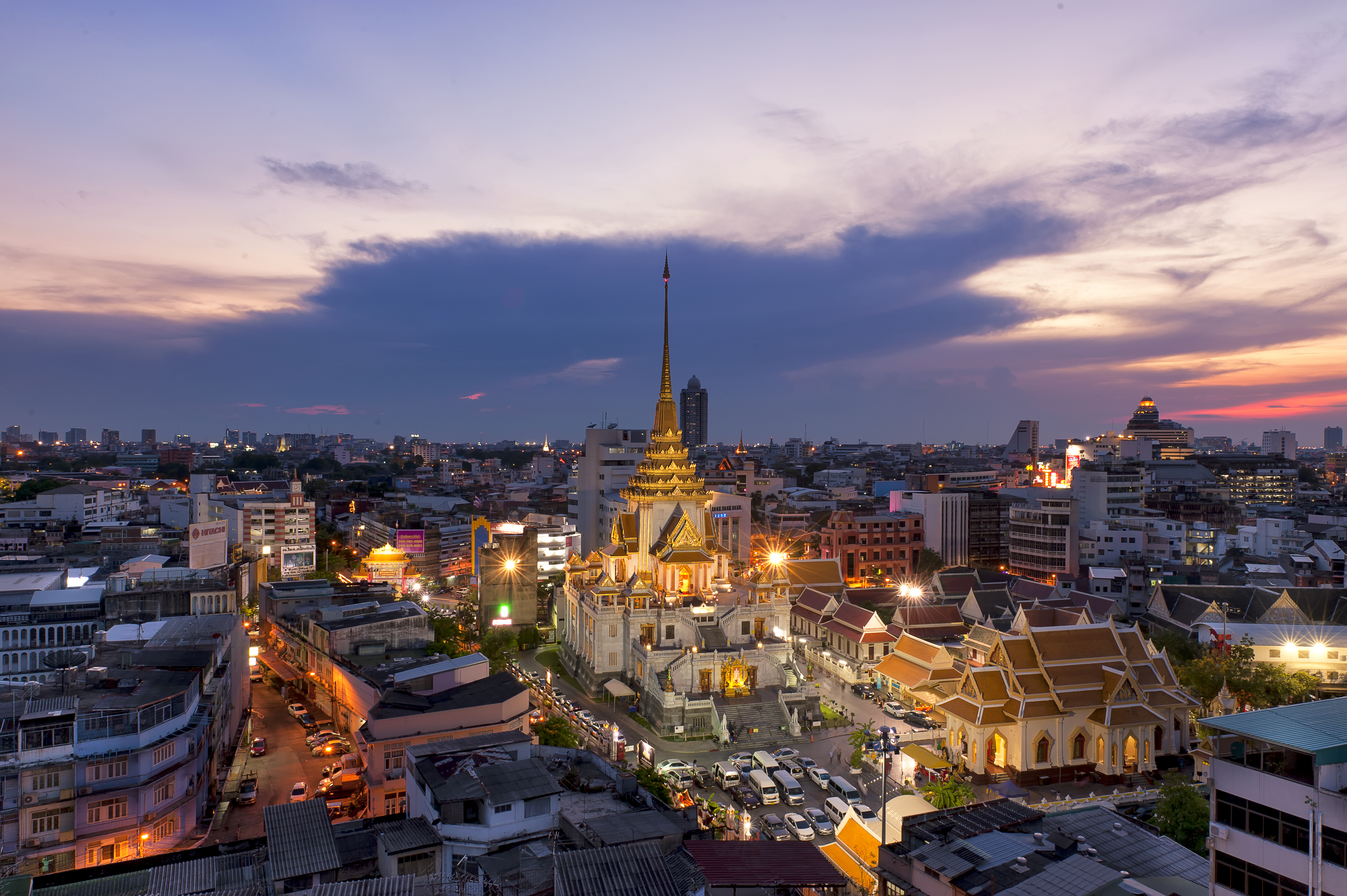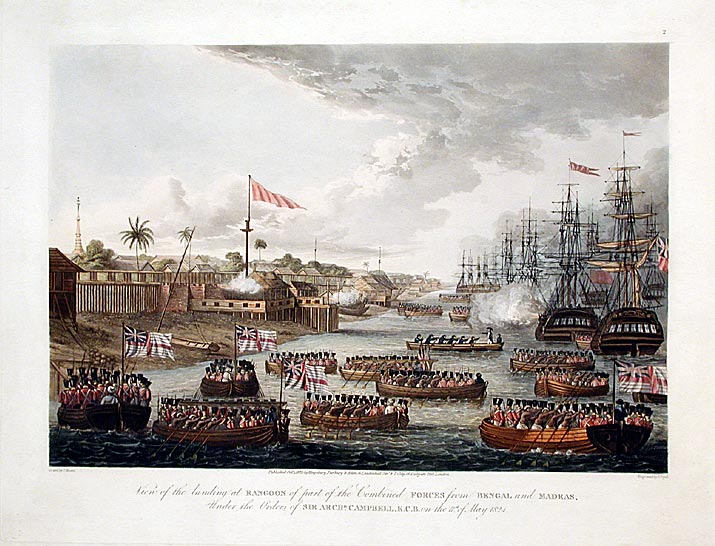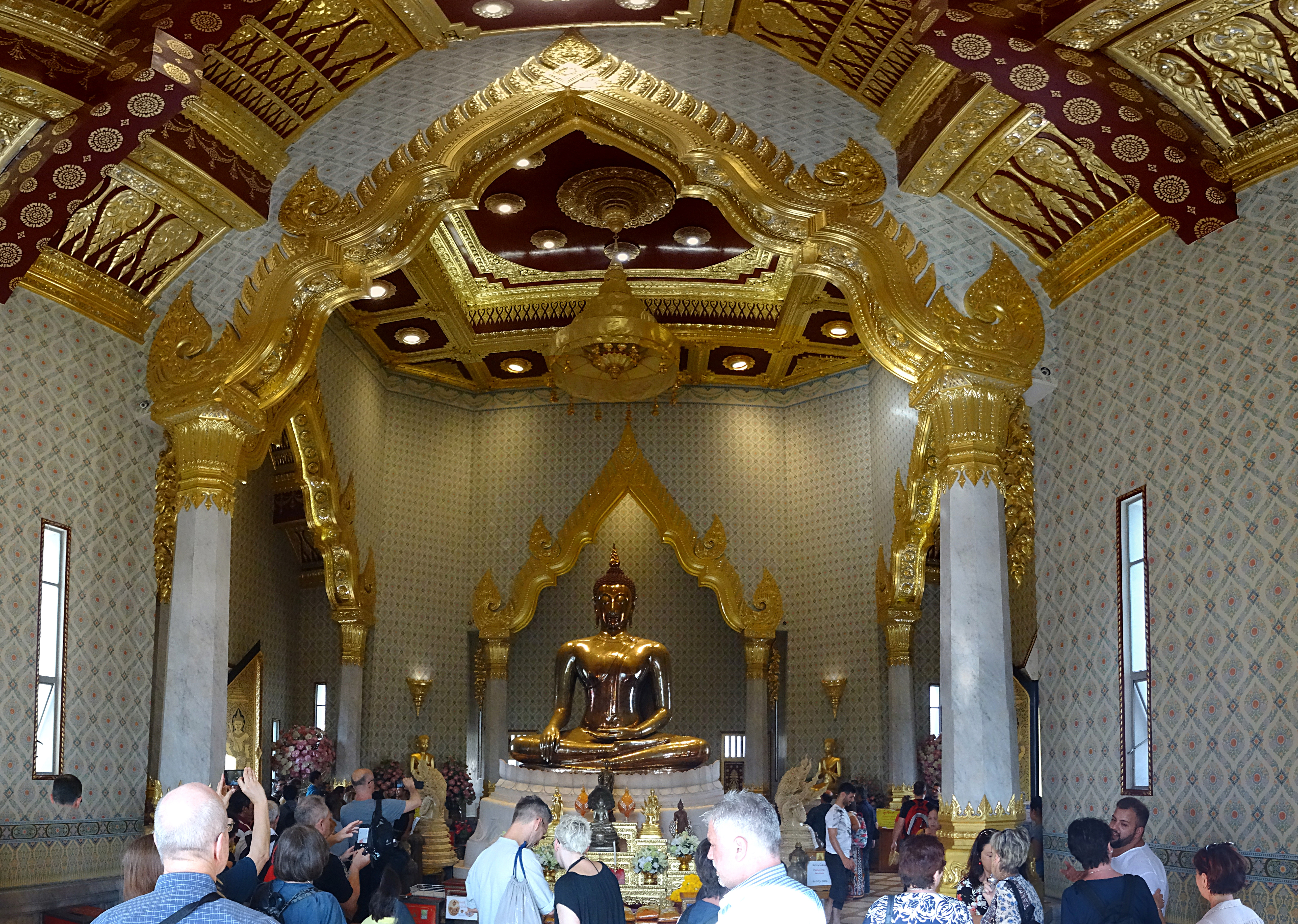|
Wat Traimit
Wat Traimit Witthayaram Worawihan () is a Theravada Buddhist temple (wat) in Samphanthawong district, the Chinatown area of the Thai capital Bangkok. Probably dating to the early Rattanakosin period, it was previously known as Wat Sam Chin () and received its current name in 1940. Today, the temple is best known for the golden Buddha statue enshrined there. It also houses the Yaowarat Chinatown Heritage Center. History Wat Traimit was previously known as Wat Sam Chin or Wat Sam Chin Tai (, 'south temple of the three Chinese'). According to oral histories, the temple was founded by three Chinese friends, hence its name. The temple was probably originally built around the reign of King Rama III (1824–1851), but was mostly rebuilt in the 1930s–1940s. It was renamed to Wat Traimit Witthayaram (''traimit'' meaning 'three friends') on 3 February 1940, and became a royal temple of the second class in 1956. A plaster Buddha statue had been moved to the temple from the abandoned W ... [...More Info...] [...Related Items...] OR: [Wikipedia] [Google] [Baidu] |
Wat Phraya Krai
Wat Phraya Krai (, ) is one of three ''khwaeng'' (sub-district) of Bang Kho Laem district, Bangkok. It has a total area of 2.300 km2 (round about 0.888 mi2) west side along Chao Phraya river and in late 2017, it had a total population of 26,681 people. History Its name means ''"Phraya Krai Temple"'', which comes from the namesake temple that used to be located here in the past. It is assumed that the temple was built before 1801. Later, Phraya Shoduek Ratchasetthi (magnate Boonma), who was the former governor for King Nangklao (Rama III), restored the temple as a royal monastery, renaming the temple to "Wat Chotanaram", and also enshrined the famous Golden Buddha image at this temple (currently enshrined at Wat Traimit in Chinatown). Later in the reign of King Chulalongkorn (Rama V), the temple had no patrons to maintain the temple and was abandoned. The chapel, including other buildings, went into ruins, eventually turning into free land for the East Asiatic Company to rent for ... [...More Info...] [...Related Items...] OR: [Wikipedia] [Google] [Baidu] |
ASA Architectural Conservation Award
The Architectural Conservation Award () is given by the in recognition of architectural conservation efforts by both the public and private sectors in Thailand. The awards, first given in 1982 and held annually since 2004, are presented to multiple winners in three categories, namely: buildings, people/organizations, and vernacular communities. List of recipients Buildings Vernacular communities Buildings worthy of conservation See also *Architecture of Thailand *Cultural heritage conservation in Thailand References {{Reflist, refs= {{cite book, editor1-last=Sukwattana Lassus, editor1-first=Pongkwan, title=20 years of the Architectural Conservation Award (1982-2002), date=2004, publisher=Association of Siamese Architects under Royal Patronage, accessdate=14 November 2014, archiveurl=https://web.archive.org/web/20090124101452/http://asa.or.th/heritage/appendix.pdf , url=http://asa.or.th/heritage/appendix.pdf, archivedate=24 January 2009, language =th {{cite web, title=Archi ... [...More Info...] [...Related Items...] OR: [Wikipedia] [Google] [Baidu] |
Luang Wisansinlapakam
Chuea Patthamachinda (, 2 February 1885 – 16 March 1982), better known by the noble title Luang Wisansinlapakam (), was a Thai traditional artisan and architect. He worked under various government departments, including the Poh Chang School of Arts and Crafts, where he taught for 17 years. Later in life, he also taught at Silpakorn University, where he was named adjunct professor. He is known for various forms of the traditional visual arts, as well as architecture. He designed numerous Buddhist temples, and is credited with an eclectic output of modern and applied Thai architecture, mostly stemming from various collaborations with Edward Healey Edward Healey was a British architect who worked mainly in Siam/Thailand during the first half of the twentieth century. He graduated from the Royal College of Arts in London in 1907, and travelled to Siam, becoming headmaster of the Poh Chang Sch ... and Phra Sarotrattananimman. References * 20th-century Thai artists 20th-centu ... [...More Info...] [...Related Items...] OR: [Wikipedia] [Google] [Baidu] |
Applied Thai Architecture
Applied Thai architecture is a movement in Thai architecture which gained popularity, especially for government buildings, during the mid-twentieth century. It arose as a way to signify Thainess, as opposed to following Western traditions, during periods of nationalism beginning during the government of Prime Minister Plaek Phibunsongkhram. The style features the incorporation of certain traditional Thai elements into buildings otherwise following modern plans, usually in the form of high-pitched gabled roofs with simplified forms of traditional ornamentation in concrete. The style has been strongly criticized—Anuwit Charoensupkul in 1969 called it the "cancer of architecture"—and mostly rejected by later architects, though it is still employed in the construction of government buildings, mostly provincial halls and courts. References Applied Thai architecture, Architecture in Thailand {{Thailand-stub ... [...More Info...] [...Related Items...] OR: [Wikipedia] [Google] [Baidu] |
Ubosot
The ordination hall (Pali: ''sīmā'') is a Buddhist building specifically consecrated and designated for the performance of the Buddhist ordination ritual (''upasampadā'') and other ritual ceremonies, such as the recitation of the Pāṭimokkha. The ordination hall is located within a boundary () that defines "the space within which all members of a single local community have to assemble as a complete Sangha () at a place appointed for ecclesiastical acts ()." The constitution of the ''sīmā'' is regulated and defined by the Vinaya and its commentaries and sub-commentaries. Burmese ordination halls In Burmese, ordination halls are called ''thein'' (), derived from the Pali term , meaning "boundary". The ''thein'' is a common feature of Burmese monasteries ('' kyaung''), although the ''thein '' may be not necessarily be located on the monastery compound itself. Shan ordination halls, called ''sim'' (သိမ်ႇ)'','' are exclusively used for events limited to the monkhood. ... [...More Info...] [...Related Items...] OR: [Wikipedia] [Google] [Baidu] |
Mondop
The ''mondop'' (, from Pali/Sanskrit ) is a building form in traditional Thai religious architecture featuring a square or cruciform building with a usually pointed roof. In the narrow sense, it refers to an enclosed square building with a roughly pyramidal, multi-tiered roof culminating in a tall pointed spire, with a roof structure very similar to the smaller '' busabok''. In the wider sense, the term may refer to religious buildings following a wide range of architectural styles, including historical structures more closely reflecting the Indic ''mandapa'', from which they are likely derived. ''Mondop'' may be used for various functions, including as scripture halls (''ho trai'') and for housing religious artefacts. Prominent examples include the library (Phra Mondop) at Wat Phra Kaew in Bangkok and the ''mondop'' covering the Buddha footprint at Wat Phra Phutthabat in Saraburi. The pointed roof structure can be found incorporated in the '' prasat'' architectural form, where it ... [...More Info...] [...Related Items...] OR: [Wikipedia] [Google] [Baidu] |
Phra Phutthamahasuwannapatimakon
The Golden Buddha, officially titled Phra Phuttha Maha Suwanna Patimakon (; ), commonly known in Thai as Phra Sukhothai Traimit (), is a gold Maravijaya Attitude seated Buddharupa statue, with a weight of 5.5 tonnes (5,500 kilograms). It is located in the temple of Wat Traimit, Bangkok, Thailand. At one point in its history, the statue was covered with a layer of stucco and coloured glass to conceal its true value, and it remained in this condition for almost 200 years, ending up as what was then a pagoda of minor significance. During relocation of the statue in 1955, the plaster was chipped off and the beautiful shining gold revealed. History The origins of this statue are uncertain. It is made in the Sukhothai Dynasty style of the 13th–14th centuries, though it could have been made after that time. The head of the statue is egg-shaped, which indicates its origin in the Sukhothai period. Given that Sukhothai art had Indian influences and metal figures of the Buddha made in Ind ... [...More Info...] [...Related Items...] OR: [Wikipedia] [Google] [Baidu] |
Rama III
Nangklao (born Thap; 31 March 1788 – 2 April 1851), also known by his regnal name Rama III, was the third king of Siam from the Chakri dynasty, ruling from 21 July 1824 to 2 April 1851. Nangklao was the eldest surviving son of King Rama II. His mother Sri Sulalai was one of Rama II's secondary wives. Nangklao was likely designated as heir by his father. His accession was uncontested and smoothly confirmed by the grand council. Foreign observers, however, falsely perceived him as having usurped the prior claim of his younger half-brother Prince Mongkut, who was born to Queen Sri Suriyendra and thus " legitimate" according to Western customs. Under the old concept of Thai monarchy, however, a proper king must emulate Maha Sammata in that he must be "elected by the people." Ironically, Mongkut may have later contributed to this misconception, when he feared that his own accession might be perceived by foreign observers as a usurpation. During Nangklao's reign, the military heg ... [...More Info...] [...Related Items...] OR: [Wikipedia] [Google] [Baidu] |
Buddhist Temple
A Buddhist temple or Buddhist monastery is the place of worship for Buddhism, Buddhists, the followers of Buddhism. They include the structures called vihara, chaitya, stupa, wat, khurul and pagoda in different regions and languages. Temples in Buddhism represent the pure land or pure environment of a Buddhahood, Buddha. Traditional Buddhist temples are designed to inspire inner and outer peace. Architecture Its architecture and structure varies from region to region. Usually, the temple consists not only of its buildings, but also the surrounding environment. The Buddhist temples are designed to symbolize five elements: fire, air, water, earth and void (space). India The design of temples in India was influenced by the idea of a place of worship as a representation of the universe. For Buddhist temple complexes one tall temple is often centrally located and surrounded by smaller temples and walls. This center surrounded by oceans, lesser mountains and a huge wall. A Chait ... [...More Info...] [...Related Items...] OR: [Wikipedia] [Google] [Baidu] |
Yaowarat Chinatown Heritage Center
Wat Traimit Museum () is a history museum in Bangkok, Thailand. Located in the Phra Maha Mondop building at Wat Traimit, which houses the golden Buddha image, it features exhibitions related to the statue's history on the building's third floor, and the Yaowarat Chinatown Heritage Center () on the second. The Chinatown exhibit focuses on the history of early Chinese immigrants in Siam, especially in the area of Yaowarat, which serves as Bangkok's Chinatown Bangkok's Chinatown is one of the largest Chinatowns in the world. It was founded in 1782 when the city was established as the capital of the Rattanakosin Kingdom, and served as the home of the mainly Teochew immigrant Chinese population, wh .... It has six exhibitions including Growing Up under the Royal Umbrella, The Birth of the Chinese Community of Rattanakosin(1782 - 1851), The Path to the Golden Age (1851 - 1957), Hall of Fame, Phra Barami Pok Klao, and Yaowarat today. References Museums in Bangkok Sampha ... [...More Info...] [...Related Items...] OR: [Wikipedia] [Google] [Baidu] |
Golden Buddha Statue
The Golden Buddha, officially titled Phra Phuttha Maha Suwanna Patimakon (; ), commonly known in Thai as Phra Sukhothai Traimit (), is a gold Maravijaya Attitude seated Buddharupa statue, with a weight of 5.5 tonnes (5,500 kilograms). It is located in the temple of Wat Traimit, Bangkok, Thailand. At one point in its history, the statue was covered with a layer of stucco and coloured glass to conceal its true value, and it remained in this condition for almost 200 years, ending up as what was then a pagoda of minor significance. During relocation of the statue in 1955, the plaster was chipped off and the beautiful shining gold revealed. History The origins of this statue are uncertain. It is made in the Sukhothai Dynasty style of the 13th–14th centuries, though it could have been made after that time. The head of the statue is egg-shaped, which indicates its origin in the Sukhothai period. Given that Sukhothai art had Indian influences and metal figures of the Buddha made in Ind ... [...More Info...] [...Related Items...] OR: [Wikipedia] [Google] [Baidu] |





